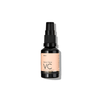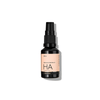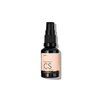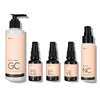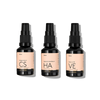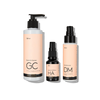Why It's Important To Moisturise Daily
If moisturising isn’t part of your daily skincare routine yet, now is the time to add it into your regime. When it comes down to it, moisturising is one of the best things you can do for your skin and is equally as integral to clean, clear and healthy-looking skin as the face wash that you use. Let’s take a moment to look at some of the basics of moisturising and steps that you can take to find the right moisturiser for your skin type and to ensure you’re using your moisturiser in the best way possible!

Why Is Moisturising So Important?
Moisturising all of your skin is important. But it’s important to note that the skin on your face, neck and chest shed cells more rapidly than other areas of the body and are particularly susceptible to being impacted by environmental changes. Finding yourself in a dry atmosphere (perhaps you’re in a naturally dry environment, take a lot of hot baths and showers or may have central heating which emits dry heat into your home) can quickly see the skin in these areas become dry, flakey and irritated. By moisturising, you keep your skin hydrated and can help to avoid these issues and other uncomfortable side effects such as itchiness and soreness. Moisturising can also reduce your chances of developing excessively oily skin or excessively dry skin, as it balances things out thus reducing your chances of developing skin conditions such as acne.
Are There Different Types of Moisturiser?
There are various different types of moisturiser out there and what’s perfect for one person may not be ideal for the next. This is because we all have different skin types. It’s important to know your skin type before choosing a moisturiser, as this will help you to find something that works for your skin the first time around. While finding the right moisturiser may seem like a process of trial and error, it’s important to make logical choices to maximise your chances of finding the right one for you sooner rather than later. Generally speaking, dry skin will benefit from heavier moisturisers that really sink into the skin. Oily skin is likely to benefit from lighter moisturisers. There are also moisturisers that are designed for use during the night and during the day. Nighttime moisturisers tend to be heavier, taking advantage of the opportunity to use something rich on your face without it interfering with your makeup routine. Day time moisturisers tend to be lighter, allowing makeup to sit more evenly on top.
When Should You Moisturise?
For most people, moisturising twice a day - once in the morning and once at night before bed - is ideal. You should wash and dry your face, use your toner if you use a toner, allow this to dry and then apply your moisturiser. This will allow your moisturiser to properly sink in and will make sure that it isn’t simply wiped away by using another product on top of it after. If you’re going to put makeup on after moisturiser, just make sure the moisturiser has had sufficient time to sink in and dry before you get started and take any more steps.
How Do You Moisturise Properly?
Sure, you can just slather your moisturiser on your face and go. But certain techniques will help you to achieve this. You should be gentle when applying your moisturiser. Aggressively rubbing the skin will merely lead to discomfort and damage. You may want to consider patting the moisturiser into your skin rather than rubbing. Alternatively, apply your moisturiser with upward strokes on your face. Really, this will prove to be one of the fastest steps in your skincare routine to carry out. It takes all of a few seconds and will quickly become routine - you won’t even think about it, it’ll just become something you automatically do.
Moisturising really is a step that you should be working into your skincare routine. Don’t make the mistake of leaving it out! It really doesn’t take too much extra time but can make all the difference to the health and appearance of your skin. Just put in the effort to find the right moisturiser and you’ll be good to go!
